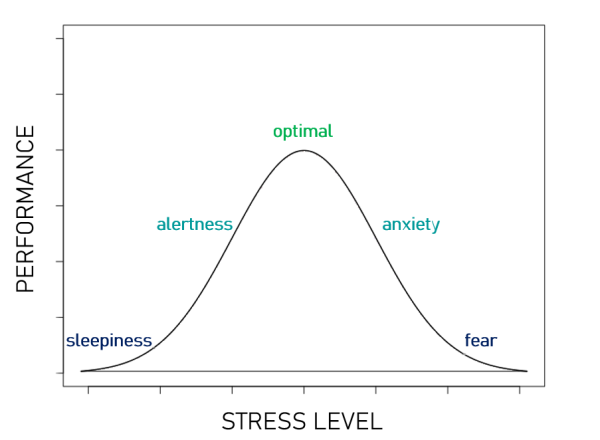Blog
Driver performance and stress level
Stress accompanies drivers almost every day. While driving, if we are not stressed due to our motivation – rushing on the way to a meeting, being angry at a traffic jam – we can still be exposed to a stressful situation at any time caused by the behaviour of other road users. The phenomenon of stress is very complex. Despite many years of research and a significant number of publications in this field, detecting stress in order to reduce its negative effects on driving safety is still a challenge for the automotive sector.
By design, autonomous vehicles should not require interaction with the driver, thus minimizing the stress level associated with driving [1][2][3][4]. However, the solution is not as simple, as prior levels of automation (levels 3 and 4) still require situational awareness or a basic level of driver’s availability to take control of the vehicle. Some studies also indicate that stress may occur due to the subjective feeling of safety – even when we are not the driver [5]. Measurements and research on vehicles users’ stress seem to be indispensable in the near future, due to the ongoing development of level 3 and 4 systems – which still require interaction with the driver. Legal requirements in this area are also changing, including: driver monitoring systems, implemented by GSR regulations, on which an expert of the Connected and Autonomous Vehicles Competence Centre (CK:PAP), MSc.Eng. Aleksandra Rodak, spoke for the autokult.pl portal. [6].
Information on stress testing methods has been collected in the manual: Handbook on Driver Stress Detection by Anna Stróż and Olga Zdzienicka from ROBOTEC.AI [7]. Both the concept of stress from the perspective of the effects felt by the driver, subjective and objective measurement methods, and the context of detecting this phenomenon, e.g. using driver monitoring systems (DMS), are comprehensively described there. The publication is a good introduction to conducting research on AV users in the context of usage comfort and trust in this technology. However, the authors do not provide a ready answer to the question “How to test stress?”. Research conducted so far suggests that even comparing two different autonomous driving systems (e.g. Tesla Auto Pilot and Volvo Pilot Assist) may require different approaches due to differences in their operation – e.g. the requirement to keep hands on the steering wheel [8]. There is also a growing need to monitor the driver’s current condition in order to maintain his level of readiness within the appropriate range (Fig. 1) [9]. Significant changes and redesign of monitoring systems in order to meet the needs of autonomous driving – e.g. with a different seat arrangement [10] – seem to be a matter of time.
Therefore, it can be expected that the human factor – stress, acceptance, trust in technology – will play a key role in the development of autonomous driving systems in the coming years and will significantly influence the final shape of autonomous driving systems.

Fig. 1 Driver performance depending and stress level (own study based on [9]).
Źródło:
[1] Pettigrew S., Talati Z., Norman R., The health benefits of autonomous vehicles: public awareness and receptivity in Australia, Australian and New Zealand Journal of Public Health, vol. 42 (5), pp. 480-483, 2018, doi.org
[2] KPMG. Connected and Autonomous Vehicles – The UK Economic Opportunity [Internet]. London (UK): KPMG; 2015
[3] Antoun M, Edwards KM, Sweeting J, Ding D. The acute physiological stress response to driving: A systematic review. PLoS One., vol. 12(10):e0185517, 2017
[4] May Mobility, Mindful mobility: 3 ways autonomous vehicles can improve mental well-being, LinkedIn, 23.12.2023, www.linkedin.com
[5] Zontone P. et al., Stress Evaluation in Simulated Autonomous and Manual Driving through the Analysis of Skin Potential Response and Electrocardiogram Signals, Sensors, vol. 20(9), pp. 2494, 2020. DOI: 10.3390/s20092494
[6] Budzik T., Obowiązkowe wyposażenie od lipca. Będziesz mieć 6 sekund, autokult.pl, 07.01.2024, autokult.pl
[7] Stróż A., Zdzienicka O., Handbook on Driver Stress Detection, Robotec.ai, Warszawa, 2023, robotec.ai
[8] Heikoop D.D., de Winter J.C.F., van Arem B., Stanton N.A., Acclimatizing to automation: Driver workload and stress during partially automated car following in real traffic, Transportation Research Part F: Traffic Psychology and Behaviour, vol. 65, pp. 503-517, 2019, doi.org
[9] Atkinson C., Why driver monitoring will be critical to next-generation autonomous vehicles, 27.01.2022, sbdautomotive.com
[10] Milardo S. et al., Understanding Drivers’ Stress and Interactions With Vehicle Systems Through Naturalistic Data Analysis, IEEE Transactions on Intelligent Transportation Systems, vol. 23(9), pp. 14570-14581, 2022. DOI: 10.1109/TITS.2021.3130438.

